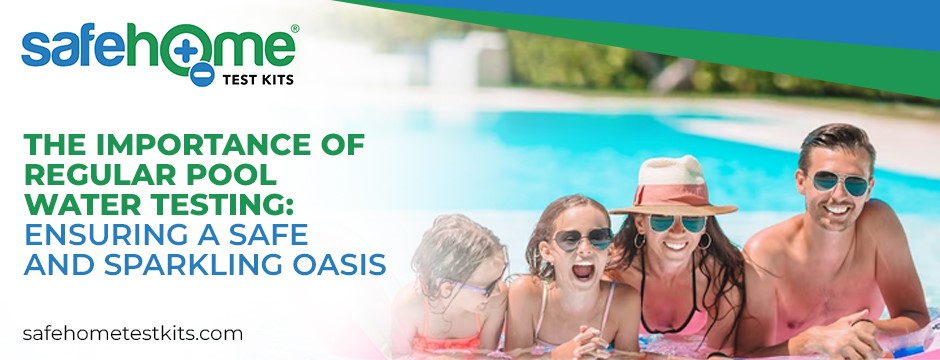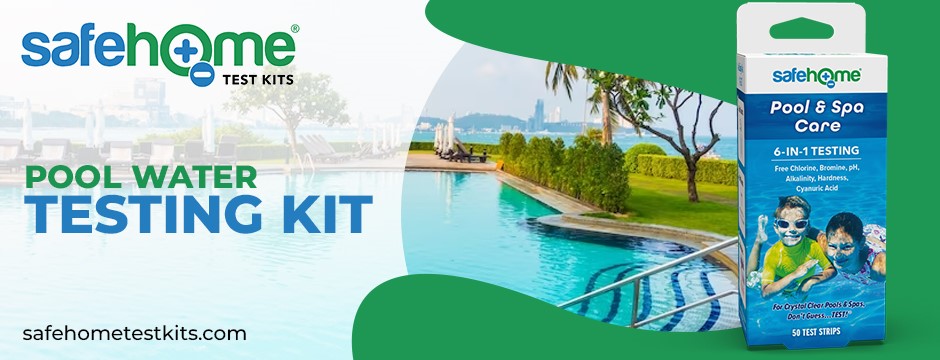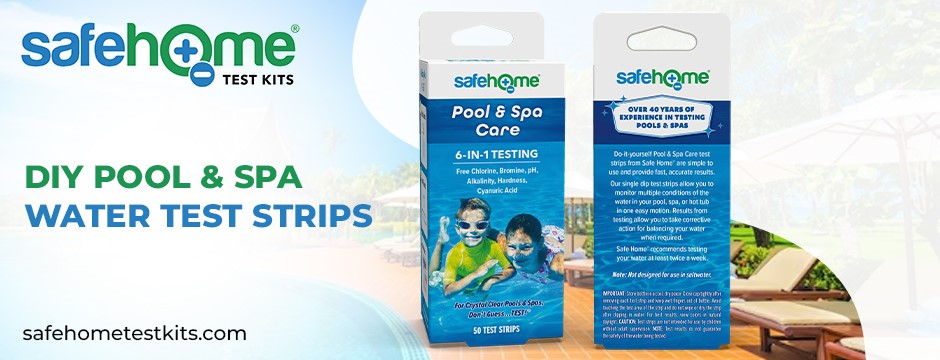The Importance of Regular Pool Water Testing: Ensuring a Safe and Sparkling Oasis

A backyard swimming pool is often considered the ultimate oasis, providing a refreshing escape during hot summer days. However, regular pool water testing is essential to maintain crystal-clear, inviting water. It’s not just about aesthetics; it’s about safety, health, and preserving the longevity of your pool. This comprehensive guide delves into the importance of regular pool water testing, the key parameters to monitor, and the steps to achieve and maintain a safe and sparkling swimming pool.
Why Regular Pool Water Testing Matters
1. Health and Safety
The safety and well-being of swimmers are paramount. Maintaining proper water chemistry helps prevent waterborne illnesses and skin irritations caused by imbalanced pool water. Harmful microorganisms thrive in improperly treated pools, potentially leading to diarrhea and ear infections. Routine testing helps ensure that your pool water is safe for everyone.
2. Water Clarity
Nobody wants to swim in cloudy or murky water. Regular testing and maintenance ensure that your pool stays inviting with crystal-clear water, enhancing the overall swimming experience.
3. Balanced Chemistry
Pool water balances various chemical parameters, including pH, chlorine levels, alkalinity, and calcium hardness. Properly balanced water prevents issues like scale formation, corrosion of pool equipment, and algae growth. It also extends the life of your pool’s surfaces and equipment.
4. Cost-Effective Maintenance
Regular testing allows you to catch and address water chemistry issues early. This prevents more significant problems that can be costly, such as a buildup of algae that requires shock treatment or equipment damage due to imbalanced water.
5. Compliance with Regulations
Many areas have regulations and guidelines in place regarding pool water quality. Regular testing helps ensure your pool meets these requirements, avoiding potential fines or shutdowns.
Key Parameters to Monitor
To maintain a safe and pristine pool, it’s crucial to test and adjust the following key parameters regularly:
1. pH Levels
pH measures the acidity or alkalinity of your pool water. Proper pH levels (typically between 7.2 and 7.8) ensure that the chlorine in your pool is effective, preventing algae growth and skin irritation.
2. Chlorine Levels
Chlorine is a primary disinfectant that kills bacteria and other harmful microorganisms. Maintaining chlorine levels (usually between 1.0 and 3.0 ppm) is essential for a safe swimming environment.
3. Total Alkalinity
Total alkalinity acts as a buffer for pH levels, helping to stabilize them. It should typically be within the range of 80 to 120 ppm.
4. Calcium Hardness
Calcium hardness measures the amount of dissolved calcium in your pool water. Proper levels (usually between 200 and 400 ppm) help prevent scale formation and equipment damage.
5. Cyanuric Acid (Stabilizer)
Cyanuric acid helps stabilize chlorine levels, preventing them from dissipating too quickly due to sunlight. The recommended range is typically between 30 and 50 ppm.
6. Total Dissolved Solids (TDS)
TDS measures the concentration of dissolved substances in your pool water. High TDS levels can lead to water clarity issues. While there is no specific ideal range for TDS, a high level (over 1500 ppm) may indicate the need to drain and refill your pool partially.

How to Test Pool Water
Regular pool water testing involves a few simple steps:
1. Gather the Necessary Tools
You’ll need a pool water testing kit, which typically includes test strips or reagent drops for measuring different parameters. Follow the manufacturer’s instructions for your specific kit.
2. Collect a Sample
Use a clean container to collect a water sample from the elbow depth in your pool. Rinse the container with pool water before collecting the sample to avoid contamination.
3. Perform the Tests
Follow the instructions on your testing kit to perform the various tests for pH, chlorine, alkalinity, calcium hardness, and any other parameters you wish to monitor.
4. Record the Results
Keep a log of your test results, including the date and time of testing. This record will help you track changes in your pool’s water chemistry over time.
5. Take Action
If you discover any imbalances or issues, take appropriate action to correct them. This may involve adding chemicals to adjust pH, chlorine levels, or other parameters. Always follow the manufacturer’s guidelines for chemical dosing.
6. Retest and Maintain
Retest your pool water regularly, ideally at least once a week. Adjust as needed to keep your pool water within the recommended range for all parameters.
Tips for Effective Pool Water Management
To make regular pool water testing and maintenance more manageable, consider these tips:
1. Establish a Routine
Establishing a routine is one of the most effective ways to ensure consistent pool water quality. Create a schedule for testing and maintenance tasks, ideally every week. This routine helps you remember when to test and makes pool care a manageable and integrated part of your lifestyle. When tasks are scheduled, you’re less likely to overlook them, ensuring your pool remains in excellent condition throughout the swimming season.
2. Invest in Quality Testing Kits
Your pool water testing accuracy relies heavily on the quality of your testing kits. Investing in reliable and high-quality testing kits ensures that your results are precise and trustworthy. Cheaper or inferior kits may provide inaccurate readings, leading to imbalanced water chemistry. Using quality testing kits, you can confidently monitor your pool’s chemistry and adjust as needed, promoting a safe and enjoyable swimming environment.
3. Seek Professional Help
If you need more certainty about managing the chemistry of your pool water or encounter persistent issues, feel free to seek professional assistance. Professional pool maintenance services have the expertise and experience to handle various water chemistry challenges. They can conduct regular testing and offer solutions to complex problems. Consulting a pool professional can save you time and effort while ensuring your pool stays in optimal condition.
4. Stay Informed
The field of pool maintenance is constantly evolving, with new technologies and treatment methods emerging. Staying informed about the latest trends and innovations is essential for effective pool water management. Educate yourself about pool water chemistry, filtration systems, and eco-friendly maintenance options. Being well-informed empowers you to make decisions that align with best practices and your pool’s specific needs. It also allows you to use advancements that simplify and enhance your pool care routine. Keeping up with the latest developments ensures you can provide the best possible care for your pool.

Keep Your Pool & Spa Water Pristine with Safe Home® Test Strips
Maintaining the health and clarity of your pool or spa water is simple with Safe Home® user-friendly DIY pool & spa water test strips. These single-dip strips are designed for swift and precise testing of critical water conditions, including Free Chlorine, Bromine, pH, Alkalinity, Hardness, and Cyanuric Acid. You can monitor your pool or spa’s water quality by using these strips at least twice a week. Swiftly detecting and addressing imbalances is key to ensuring the safety and comfort of swimmers and bathers. Please note that these test strips are not intended for use in saltwater pools or spas. Each kit contains 50 test strips, making it easy and convenient to maintain your aquatic oasis at its best.
Conclusion
Regular pool water testing is not just a chore; it’s a responsibility that comes with owning a pool. It ensures your pool’s safety, health, and longevity while providing a pleasant swimming experience. By monitoring and maintaining proper water chemistry, you can enjoy your backyard oasis to the fullest, knowing it’s a safe and sparkling haven for family and friends to enjoy throughout the swimming season.


